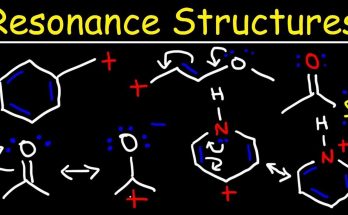Building for wonder is a decision to prioritize awe over efficiency, curiosity over convention, and emotional resonance over transactional value. It’s not the typical path businesses take, especially in a world that often rewards predictability and control. But when a company chooses to build for wonder, it opens the door to something deeper—an experience that lingers, that moves people, and that creates a lasting impression far beyond the moment of interaction. Wonder is not just a feeling; it’s a strategic force that can shape how people relate to a brand, a product, or even an idea.
At its essence, wonder is about surprise and scale. It’s what happens when something exceeds expectations, when it feels bigger than the sum of its parts. Businesses that build for wonder understand that people crave moments that break the routine, that lift them out of the ordinary and into the extraordinary. These moments don’t have to be grand or expensive—they just have to be intentional. A beautifully designed interface, an unexpected gesture of generosity, a story that touches the heart—these are all ways wonder can be woven into the fabric of a business.
Think of how Disney approaches its theme parks. Every detail, from the architecture to the ambient music to the way cast members interact with guests, is designed to evoke a sense of magic. It’s not just entertainment—it’s immersion. Visitors aren’t just customers; they’re participants in a world that feels enchanted. That’s the power of building for wonder. It transforms a service into a story, a product into a portal. And while not every business can—or should—operate like Disney, the principle applies universally: when you build for wonder, you build for emotional depth.
Wonder also invites engagement. When something feels wondrous, people want to explore it, share it, and return to it. It sparks curiosity and conversation. Consider how brands like LEGO or National Geographic have built entire ecosystems around wonder. LEGO doesn’t just sell plastic bricks—it sells the possibility of creation, imagination, and play. National Geographic doesn’t just publish articles—it invites readers into the mysteries of the natural world. These brands succeed not because they offer the most utility, but because they offer the most inspiration.
Importantly, building for wonder doesn’t mean abandoning practicality. It means layering meaning and emotion on top of function. A product can be useful and beautiful. A service can be efficient and enchanting. The key is to ask not just “Does this work?” but “Does this move someone?” That shift in perspective changes how teams design, how leaders communicate, and how businesses grow. It encourages a mindset that values artistry, empathy, and imagination—qualities that are often overlooked but deeply impactful.
Technology can play a role here, but it must be used with care. Automation and data can enhance experiences, but they rarely create wonder on their own. Wonder comes from the human touch, the unexpected detail, the story behind the solution. When businesses use technology to amplify those elements—rather than replace them—they create experiences that feel both modern and meaningful. Think of how Spotify’s year-end Wrapped campaign turns listening habits into a personalized narrative. It’s data-driven, yes, but it’s also delightful. It makes people feel seen and celebrated.
Culture is another critical ingredient. Organizations that build for wonder tend to foster environments where creativity is encouraged, where experimentation is safe, and where purpose is clear. They don’t just chase metrics—they chase meaning. That kind of culture attracts talent, energizes teams, and builds resilience. When employees feel like they’re part of something inspiring, they bring more of themselves to the work. They look for ways to surprise and delight, not just to deliver. That energy is contagious, and it shows up in the customer experience.
There’s also a long-term advantage to building for wonder. While trends come and go, emotional connection endures. People remember how something made them feel. They talk about it, they recommend it, and they stay loyal to it. In a crowded market, wonder becomes a differentiator. It’s not easily copied, because it’s rooted in authenticity and intention. It’s not just about being different—it’s about being memorable.
Of course, building for wonder requires courage. It means taking creative risks, embracing ambiguity, and sometimes going against conventional wisdom. Not every attempt will succeed, and not every audience will respond. But the effort itself signals something important: that the business is willing to care, to imagine, and to reach beyond the obvious. That signal builds trust, even when the outcome is imperfect. It shows that the company is not just in it for the transaction, but for the transformation.
Ultimately, when you build for wonder, you build for possibility. You create space for people to feel something unexpected, something beautiful, something meaningful. That space is where loyalty is born, where innovation thrives, and where business becomes more than business. It becomes a source of joy, of connection, and of inspiration. And in a world that often feels rushed and routine, that kind of experience is not just welcome—it’s needed.



